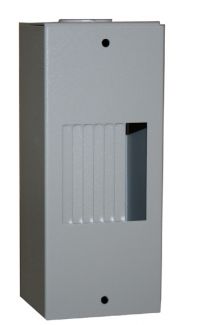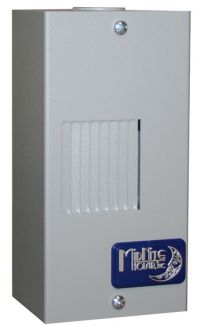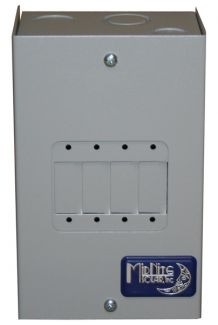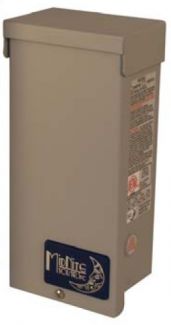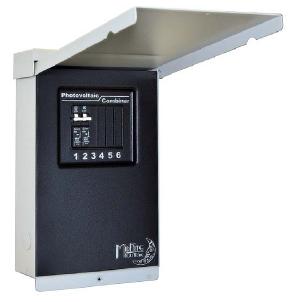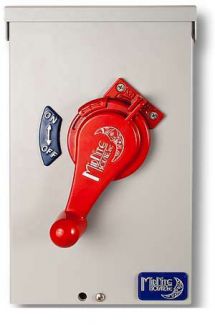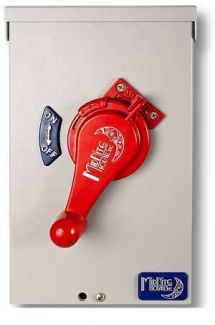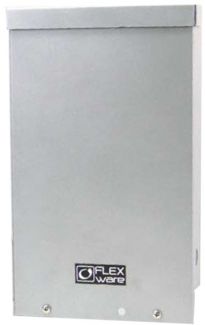Electrical Components 101

Electrical Equipment.
It should be no surprise that building a solar electric system will require some additional components to get electricity from the sun to your house, RV or other equipment. But what solar electrical components do you really need?
Wire
A conductor (a/k/a wire or cable) is required to move electricity from one point to another. And in the case of a solar electric system, there are a number of connections to get electricity from the sun to your house. Most solar panels come with pre-wired positive and negative "leads" that extend from the panel's junction box on the rear of the panel. From those leads, wire connects to your home's inverter (if grid-tied) or your charge controller (if off-grid). Wire also connects the inverter to your AC service panel, or from your charge controller to your battery bank. Other conductors connect your batteries together to form the proper voltage and size battery bank. And then from the battery bank to the inverter/charger and then the service panel.
Types of Wire
The conductors mentioned in the very basic description above are not all the same. Wire and cable come in different sizes (gauges) and types depending on whether the electricity being carried is AC or DC, the amount of voltage, the amount of current, distance traveled, whether it will be exposed to high heat or cold, moisture, sunlight, buried, on a roof or running through conduit, etc. Using the right wire, for the right situation is very important for the system to work well and to ensure safety.
Combiner Boxes
Efficient wire design and cost make it worthwhile to combine circuit strings and continue on with a better-suited conductor type for the remaining run. To illustrate, it isn't practical or cost effective to run positive and negative PV wire runs from 10 individual solar panels on a roof to an inverter in the garage. Instead the solar panel conductors from each string (say 5 panels to a string for example) are combined in a combiner box located near the array on the roof. In the combiner box, the string conductors are connected to a single positive and negative wire conductor that runs to the inverter in the garage. That long run is often called a "home run" and would likely be a type of building wire chosen to meet any voltage, amperage, temperature or conduit requirements.
Disconnects (a/k/a Shut Offs)
NEC code requires that a solar electric system include disconnect switches to rapidly disconnect power sources from the building circuits in the event of an emergency, and to facilitate maintenance and repair of individual system components. Per NEC, disconnects are accessible switches or circuit breakers without exposed, live parts, and rated for the system voltage and available current. One is placed along the "PV source circuit" between the solar panels and the inverter to disconnect the system from the DC electricity produced by the solar array. Another would be placed along the "inverter output circuit" between the inverter and the AC service panel. In an off-grid system, there would be a shut off between the panels and the charge controller and between the batteries and the inverter as well.
Over Current Protection Devices (OCPDs)
An OCPD prevents a conductor or device from carrying more current than its rating allows. Common OCPDs include circuit breakers and fuses. An OCPD will open when subjected to over-current which then reduces the current to zero. Over-currents can result from overloads like "starting surge" overloads from motors or connecting too many loads to a circuit. Or they can result from faults due to failures of insulation, connections or wiring practices. Because OCPDs are built to function to specific current, voltage, AC/DC ratings, there is a large variety of options. It's important to select the right OCPD for a particular conductor or component of the PV system.
Custom Cable and Other Components
At SolarPanelStore.com, we cut, strip, crimp MC4 connectors and lugs and assemble custom length cables of many types: solar PV cable, building wire, battery cable, inverter cable, tray cable and more. We also sell the bulk cable, lugs, connections and tools to do the job yourself! That includes the other miscellaneous components like the cable grips to provide a weather-tight fitting for cable running into a battery or combiner box. And MC4 connections, MC4 branch connectors, and more. We only sell UL-listed conductors, connectors and fittings to ensure the safety of your system.
Electrical Components Product Pages
With this overview behind you, you can click here to explore our Electrical Parts and Wire & Cable pages for more information on solar electrical components.
- Tags: Breakers Electrical Fuses Solar Basics Wire
- Thomas Lindberg

